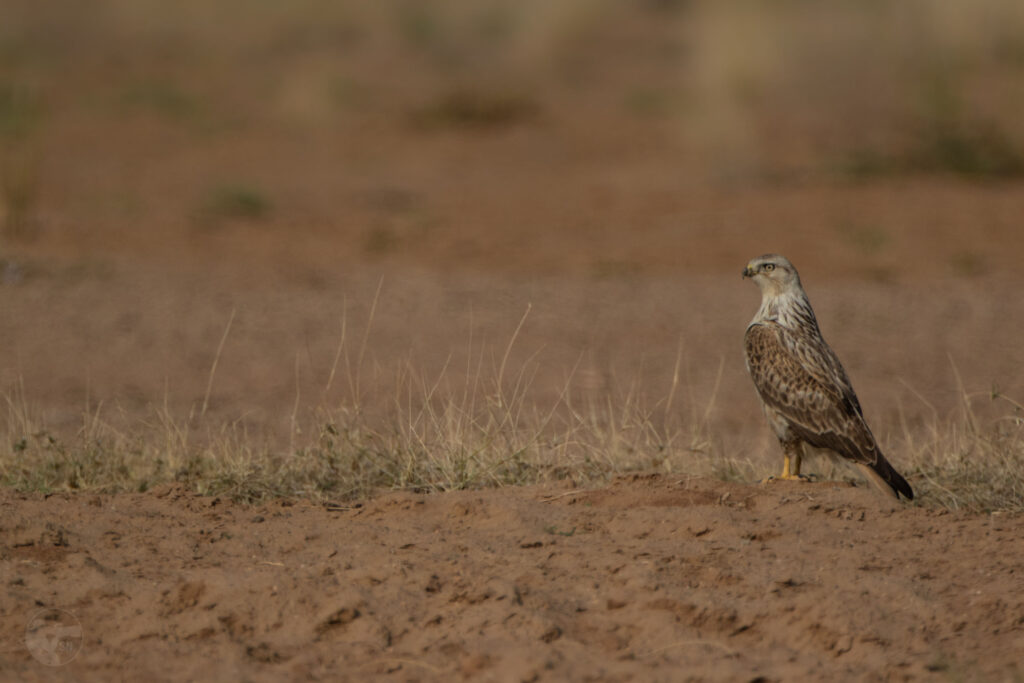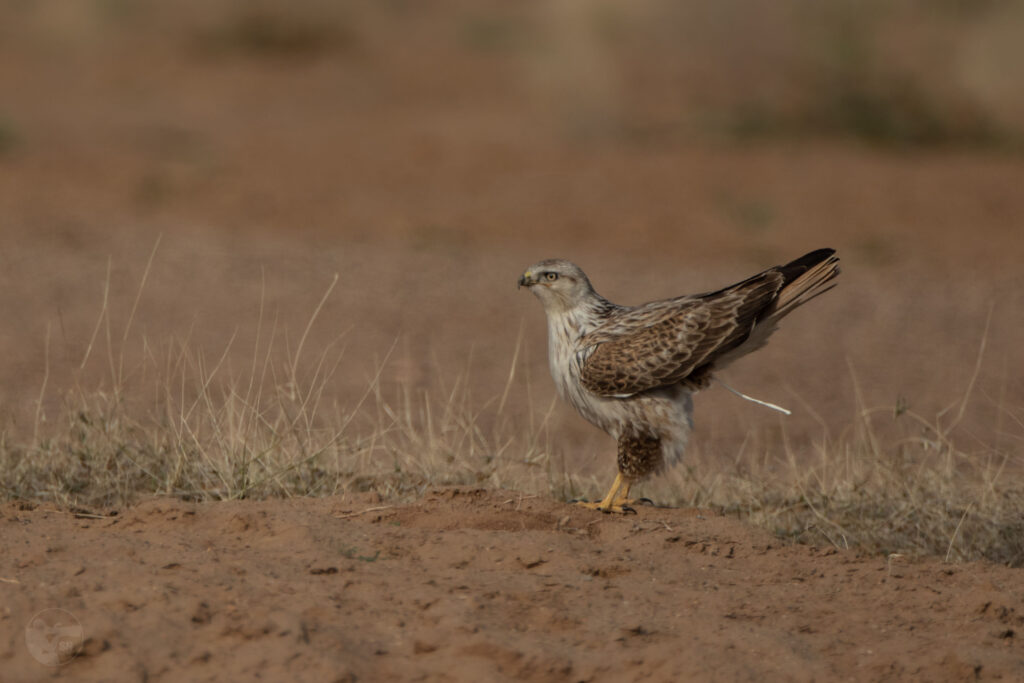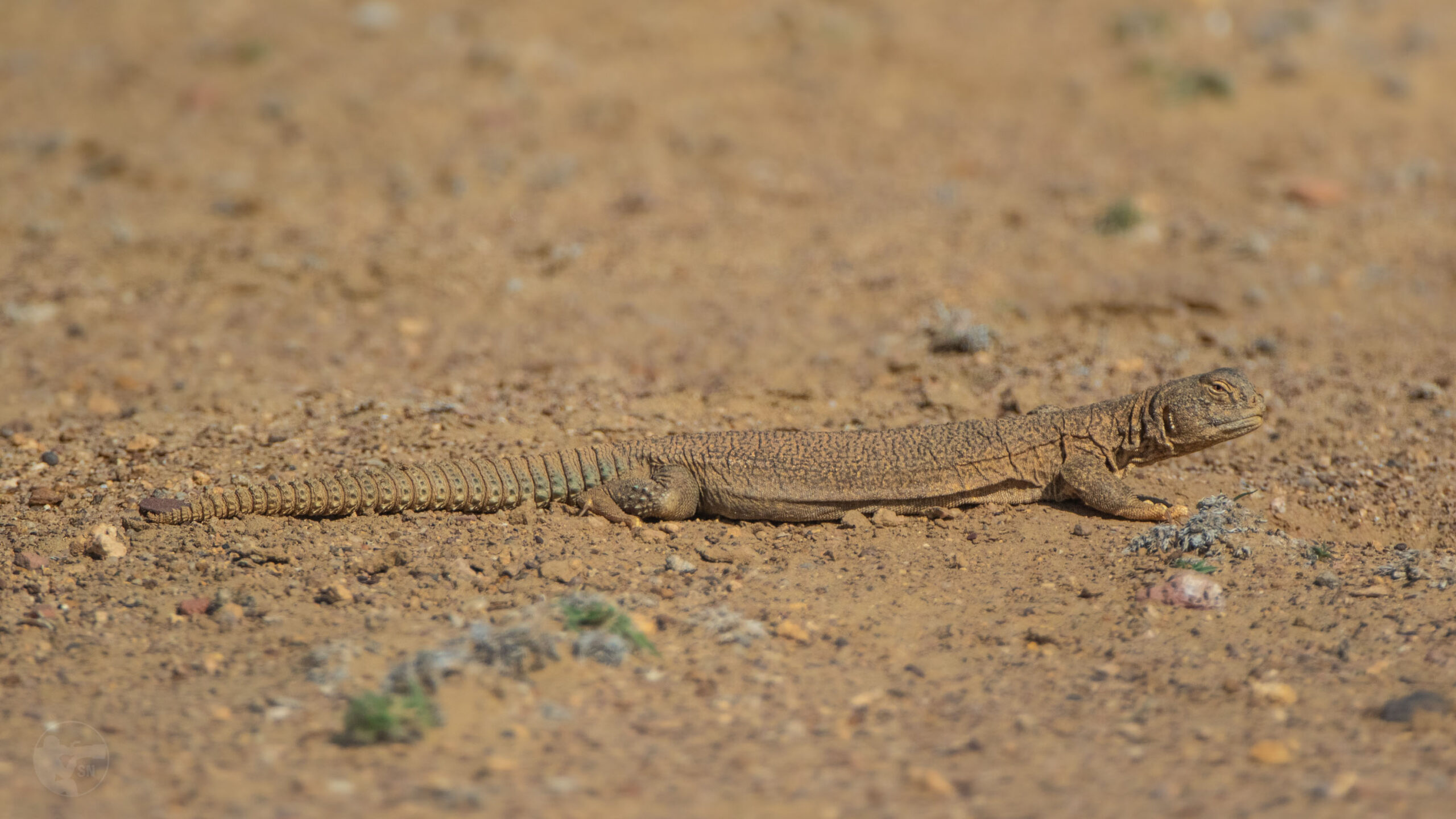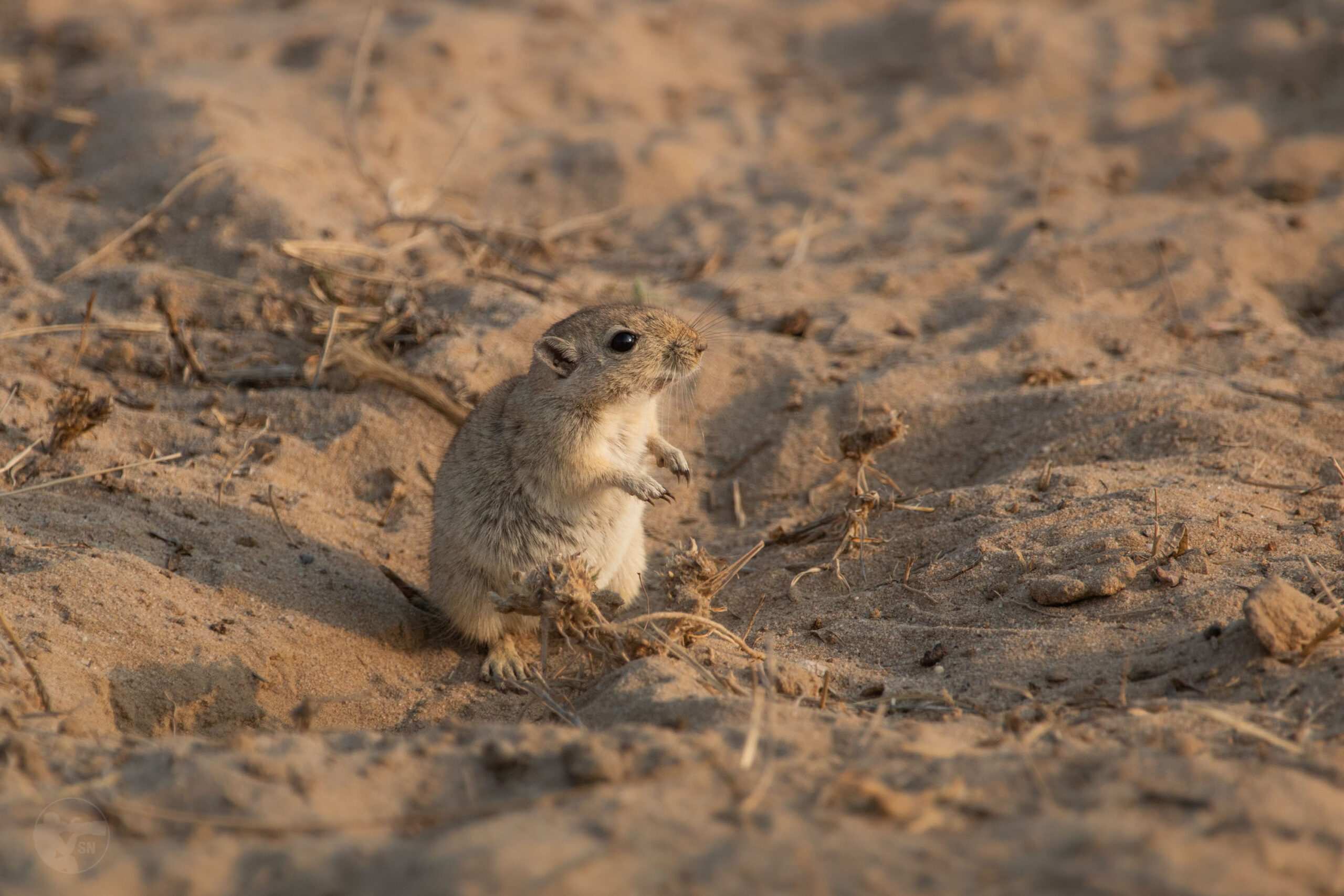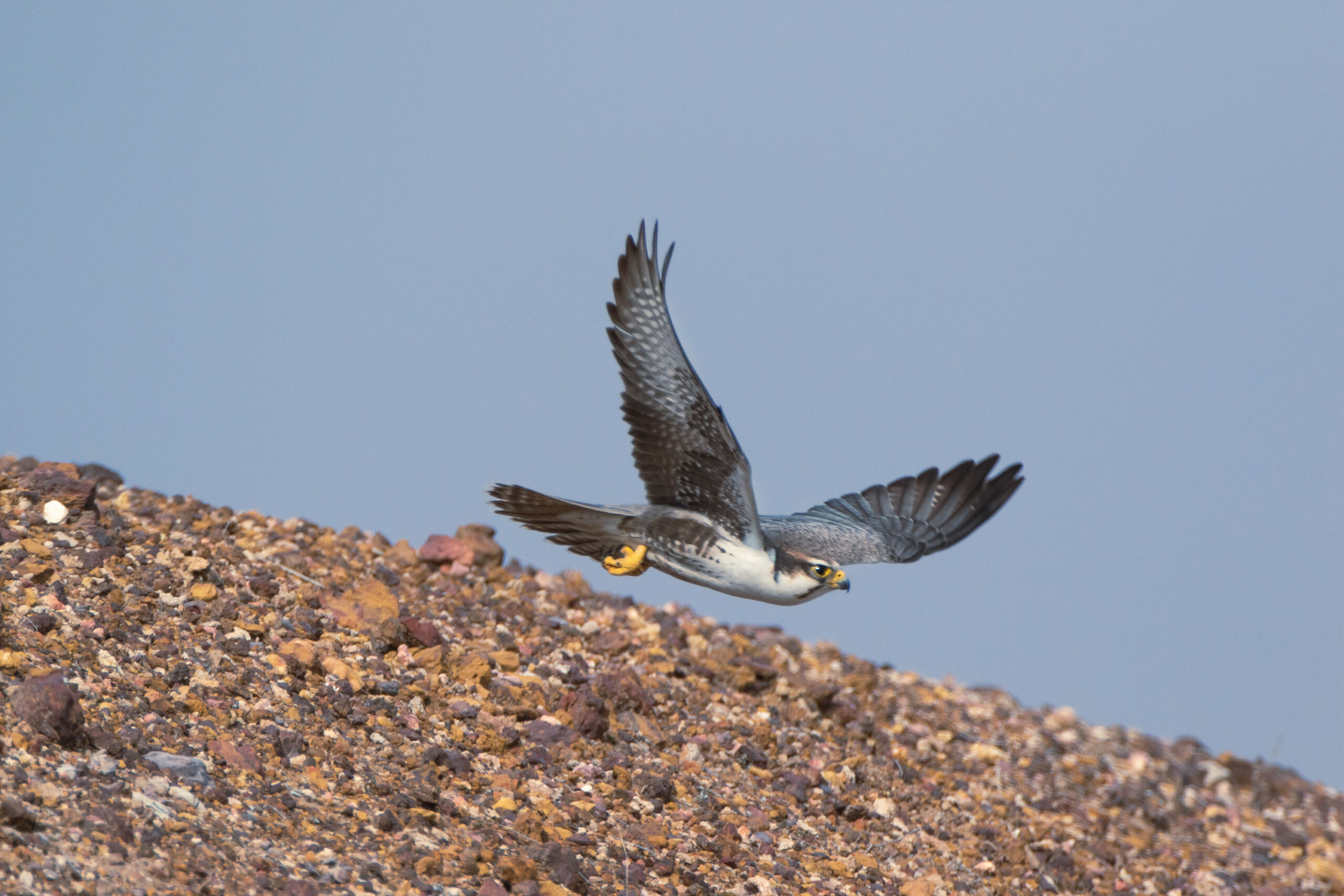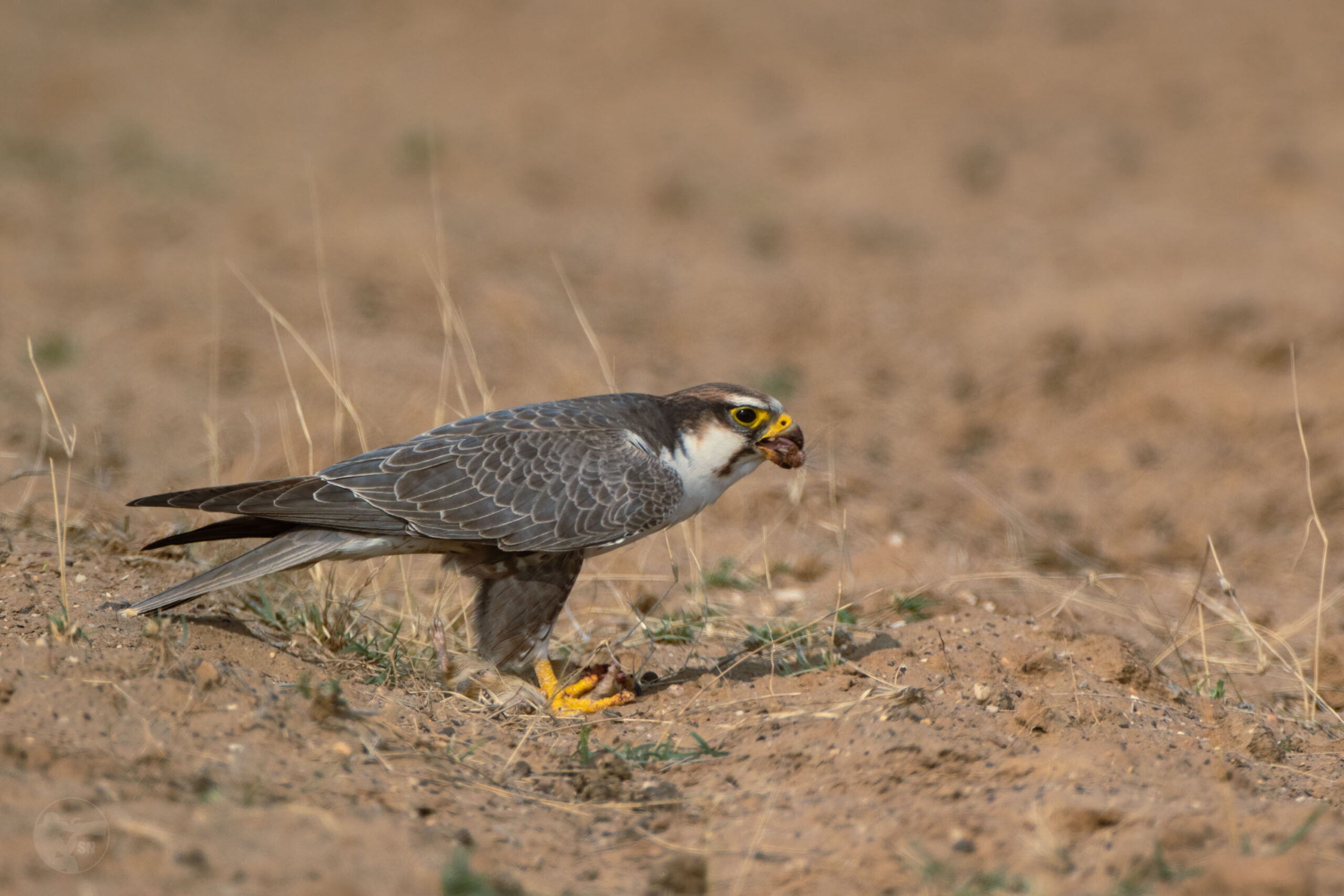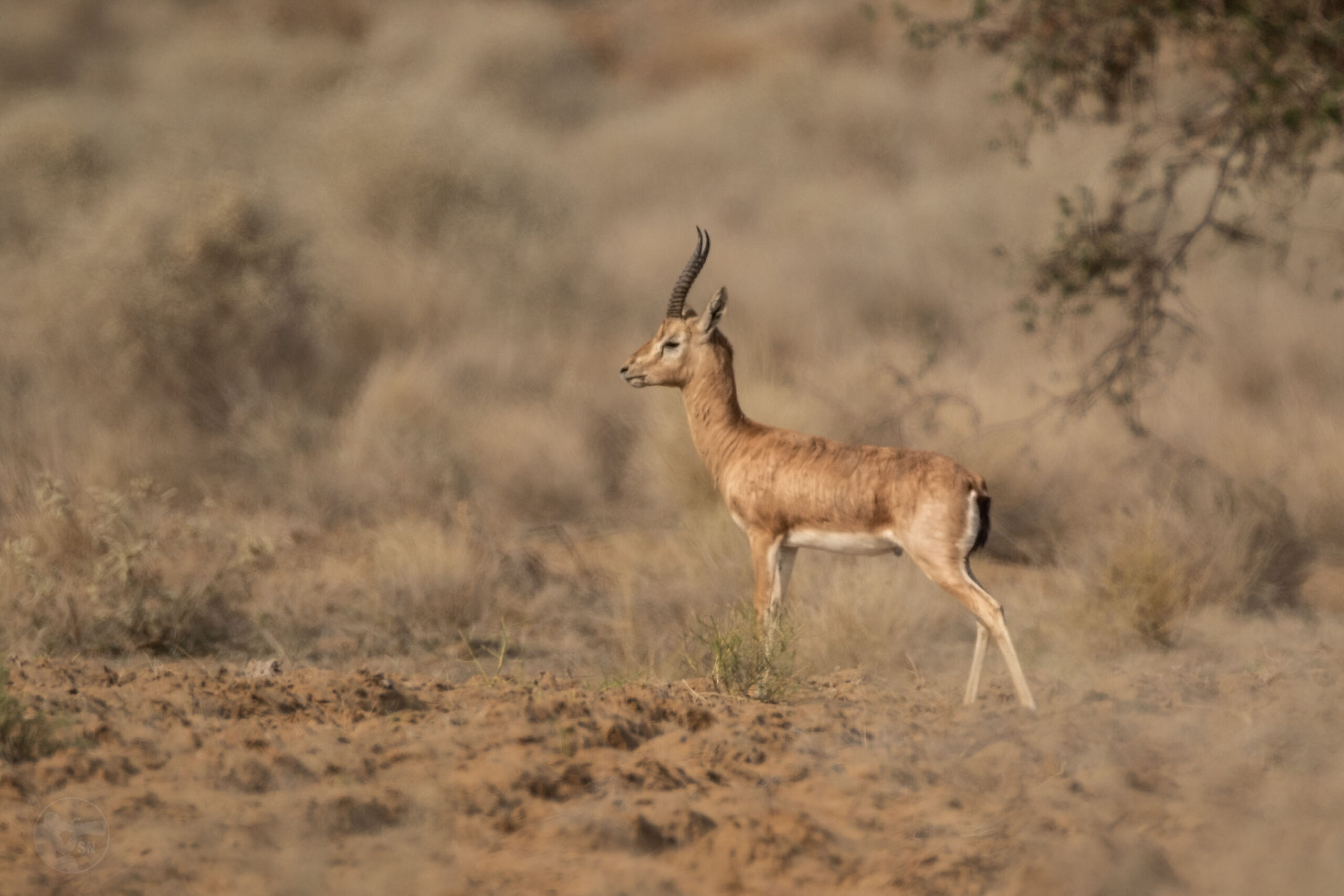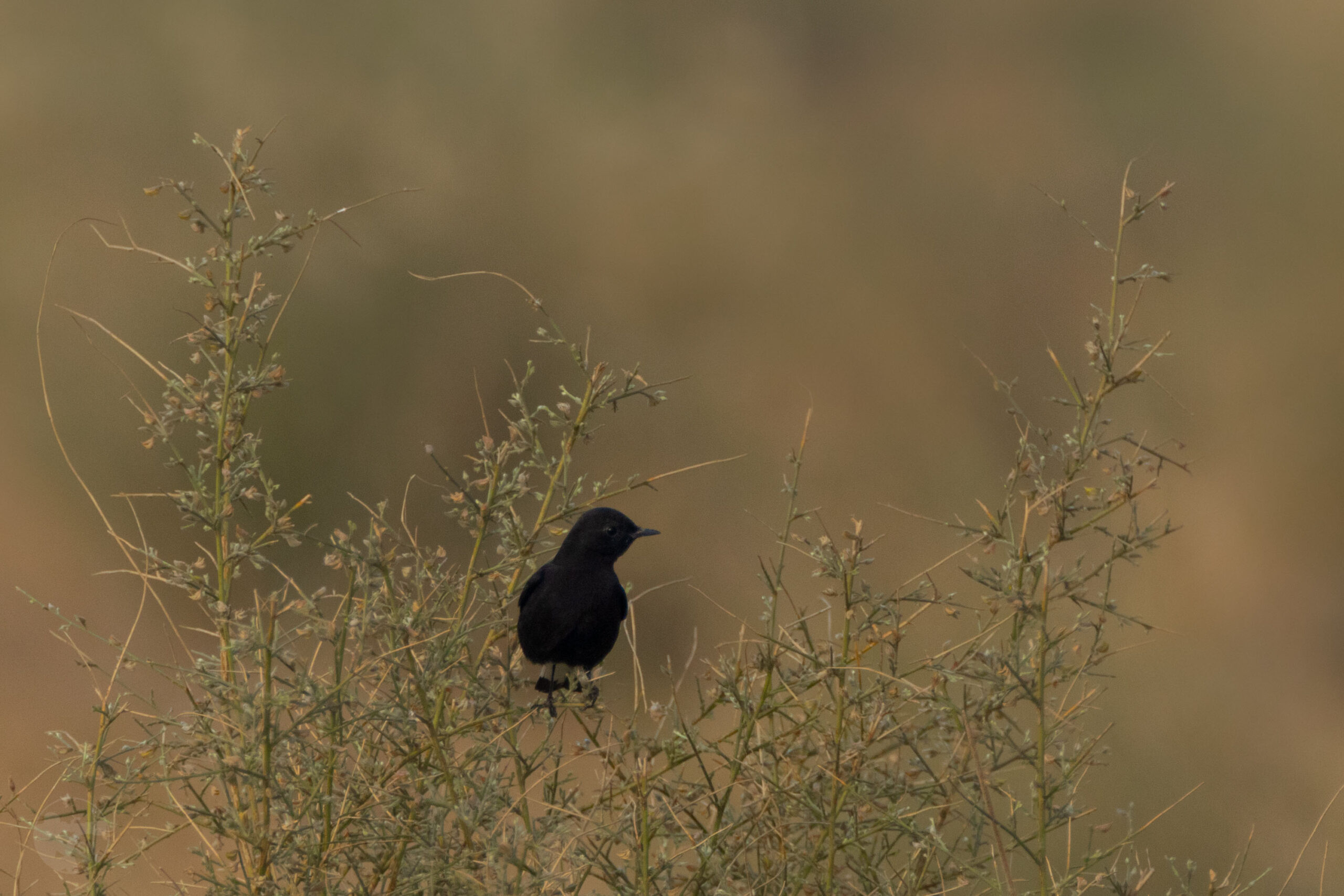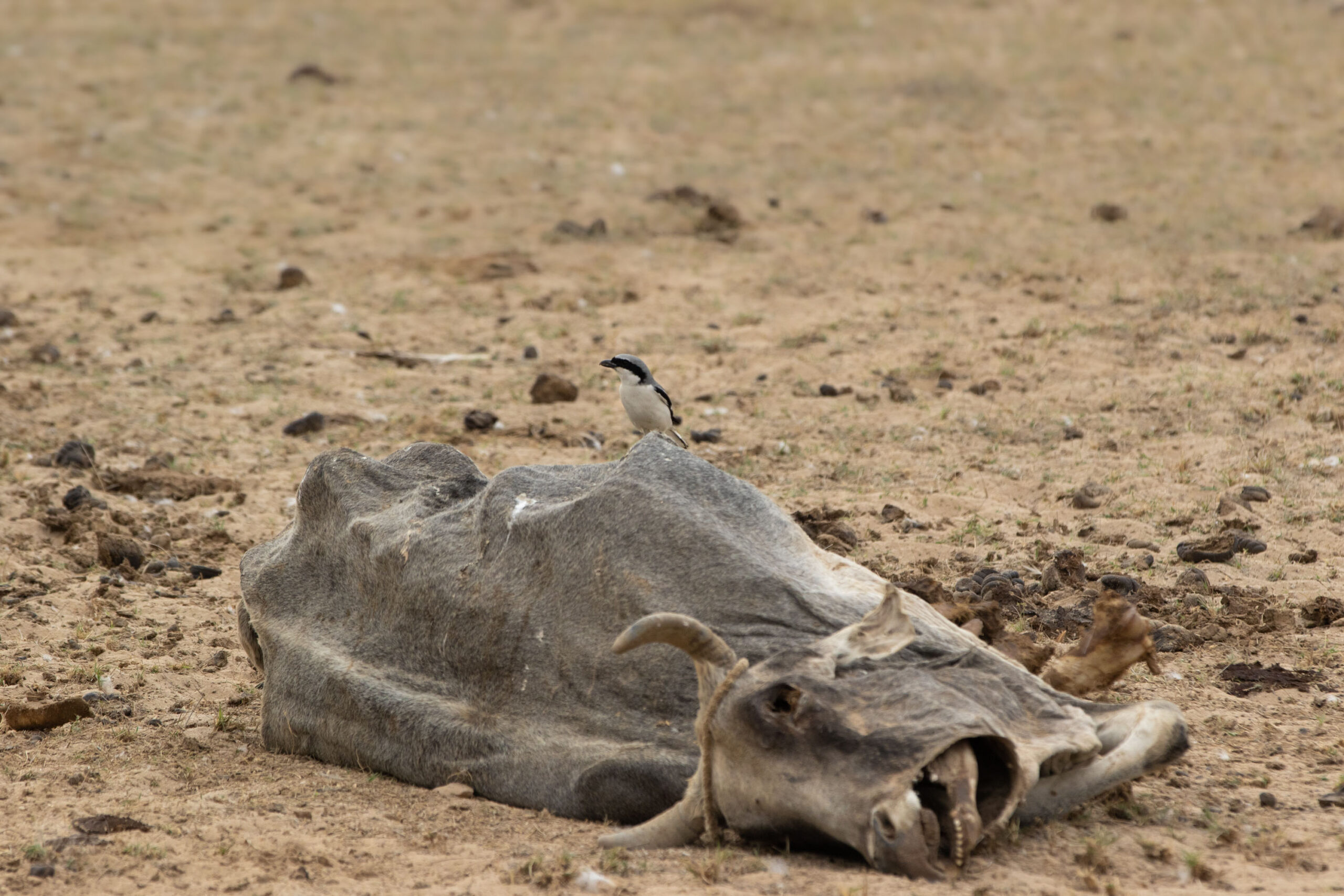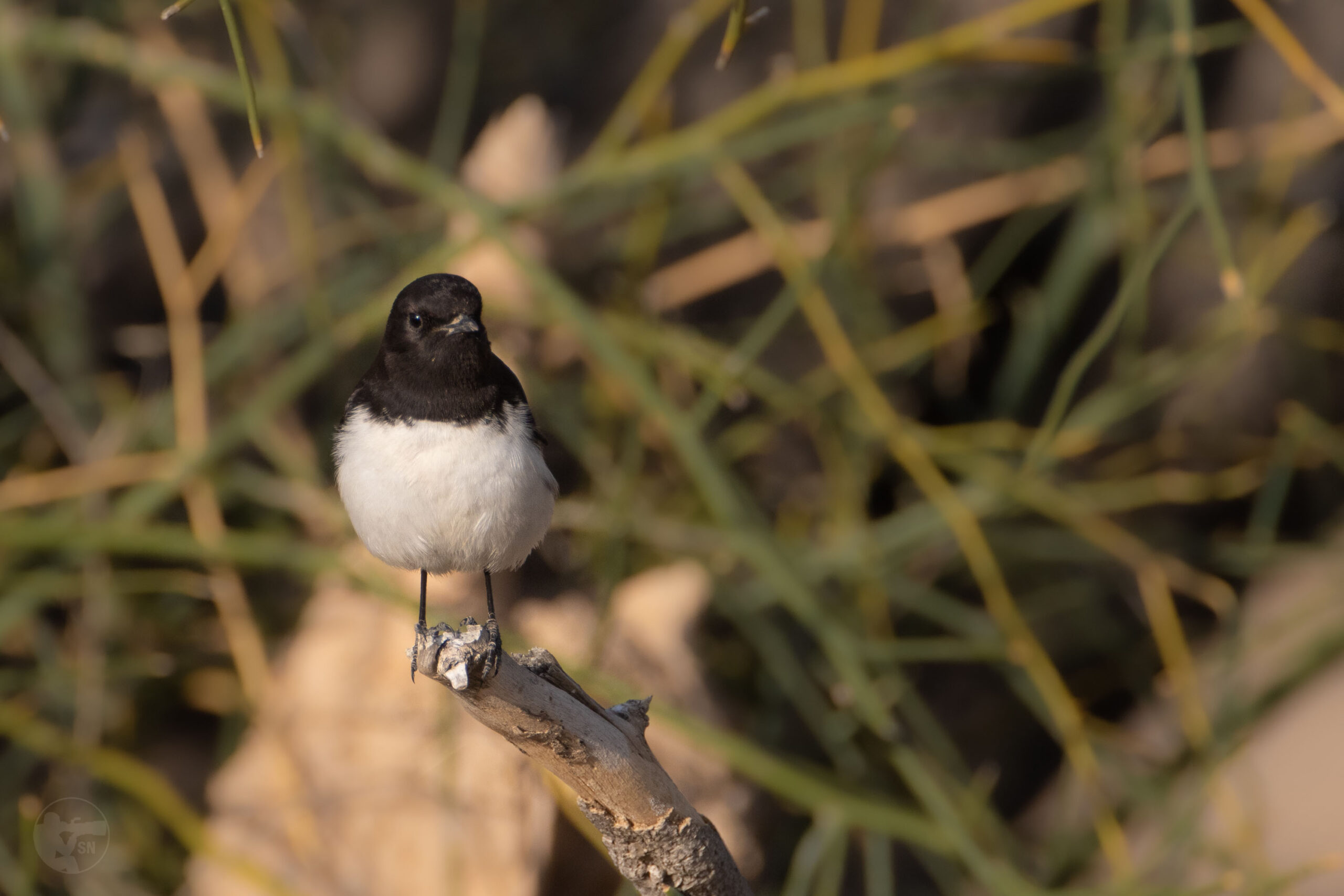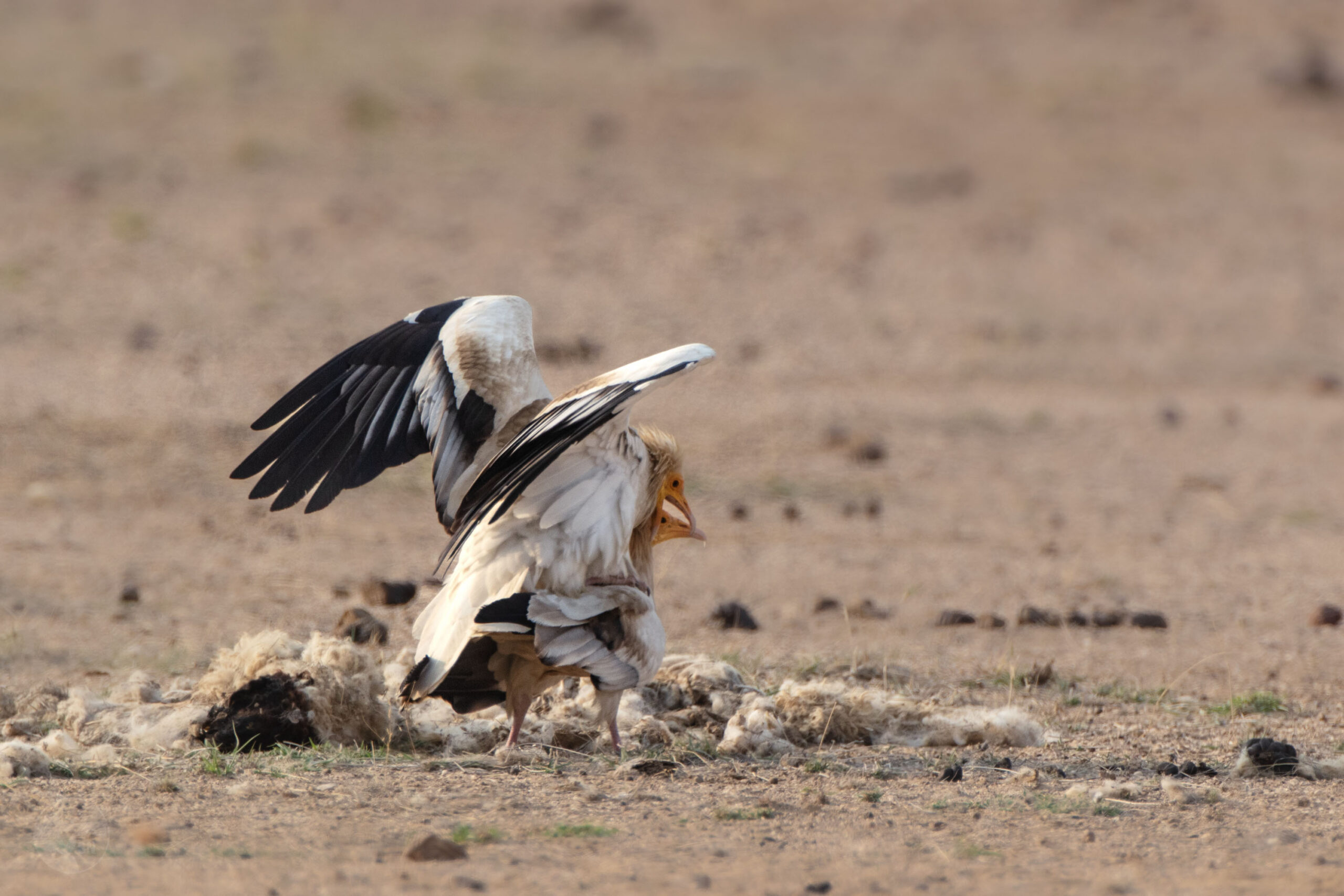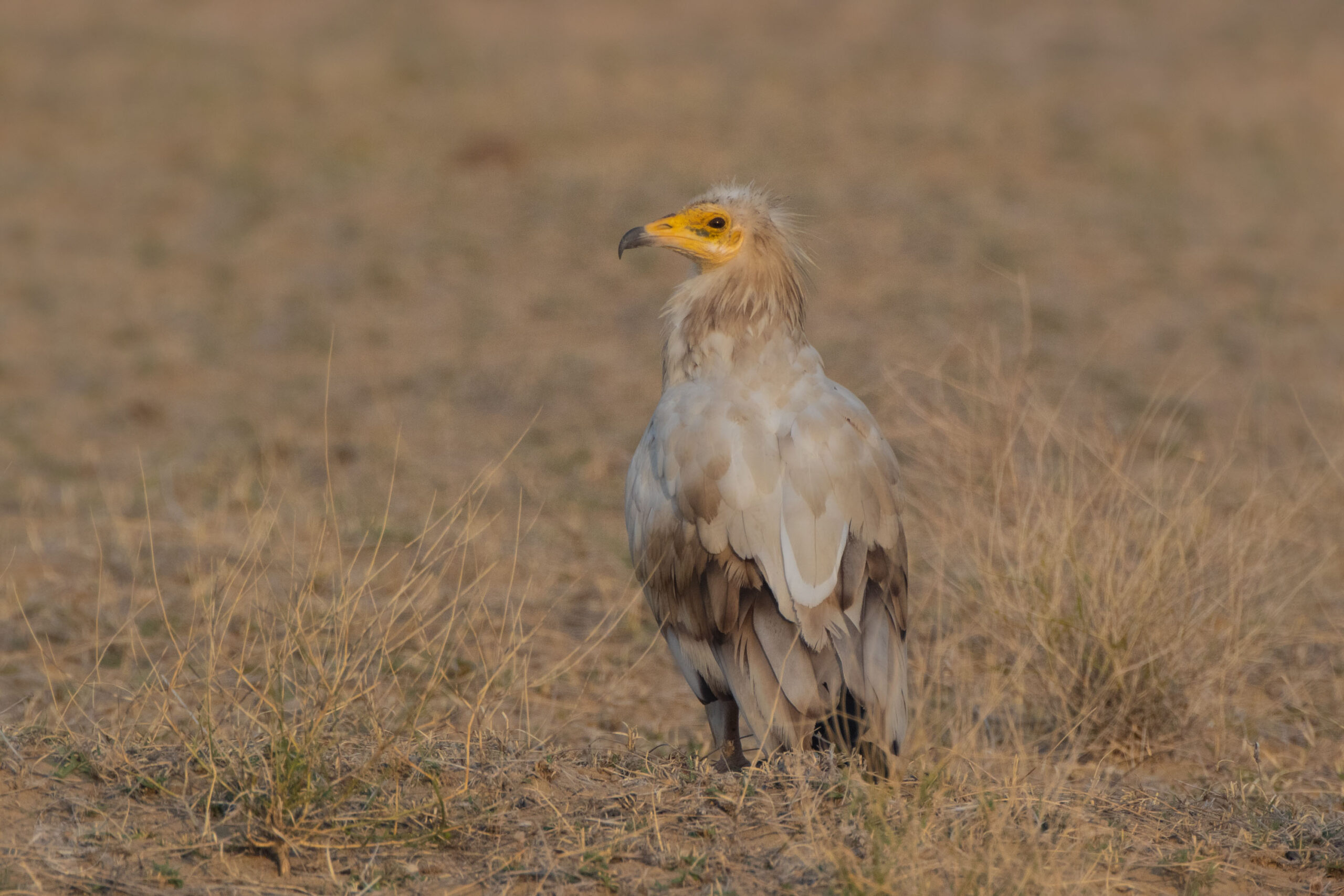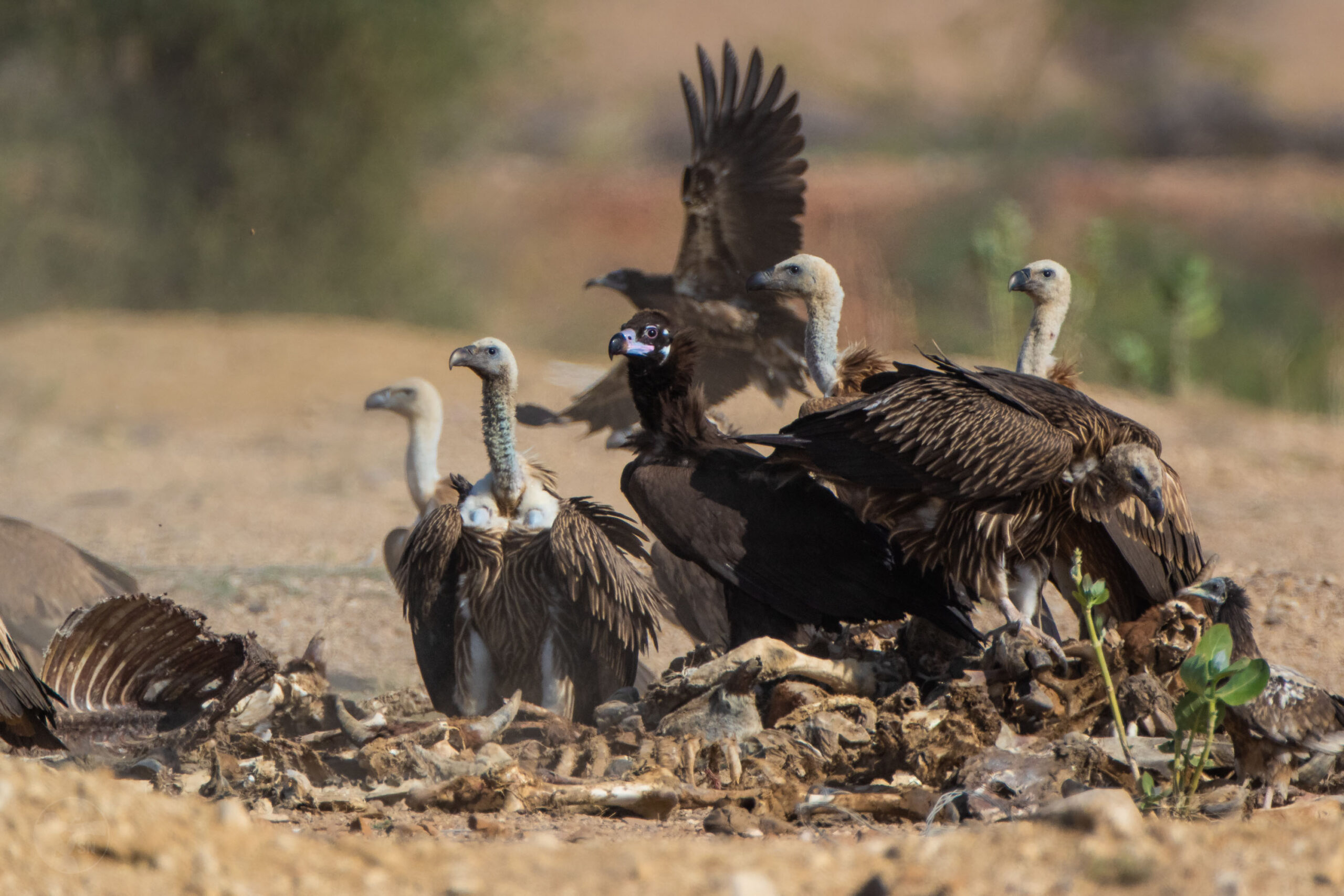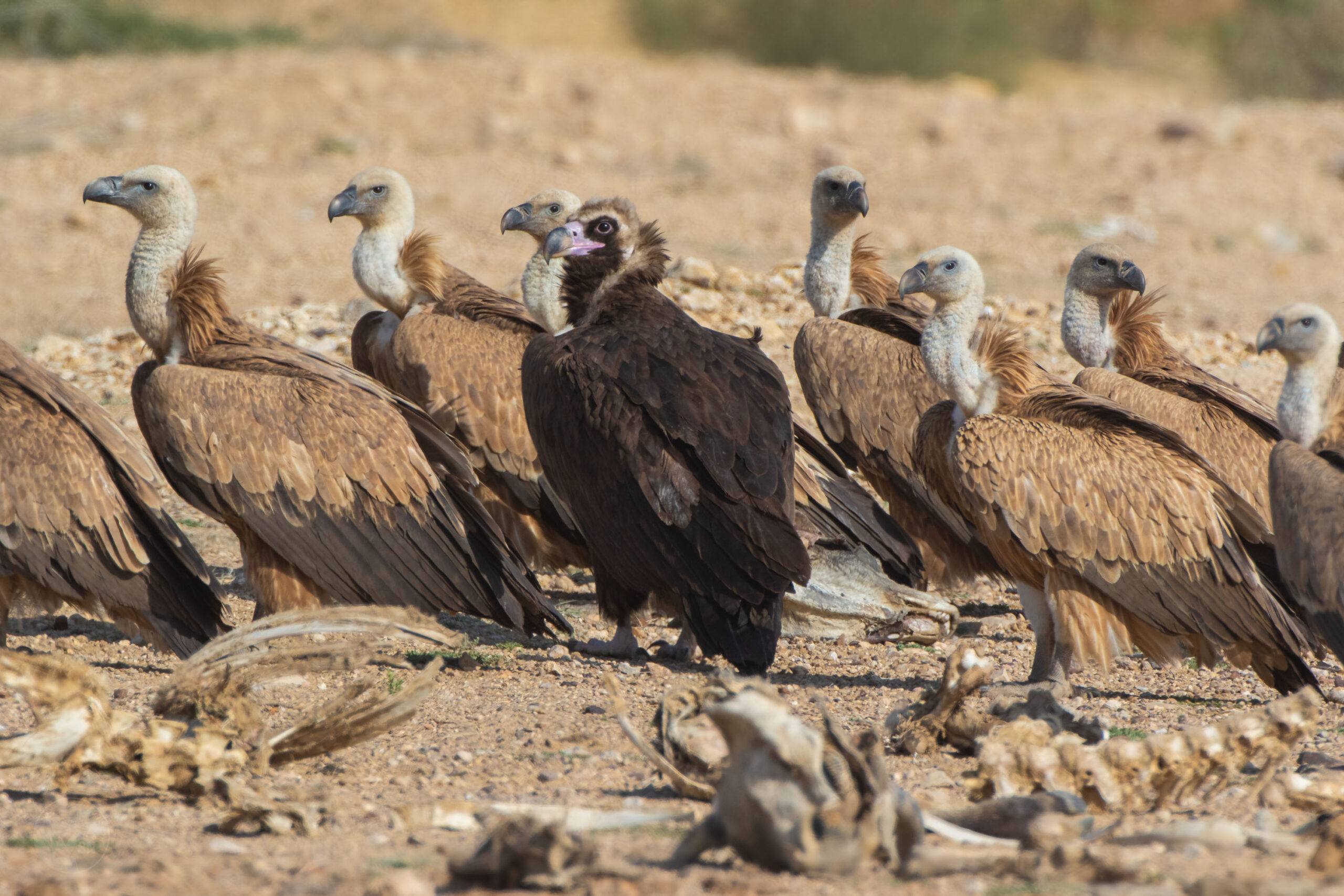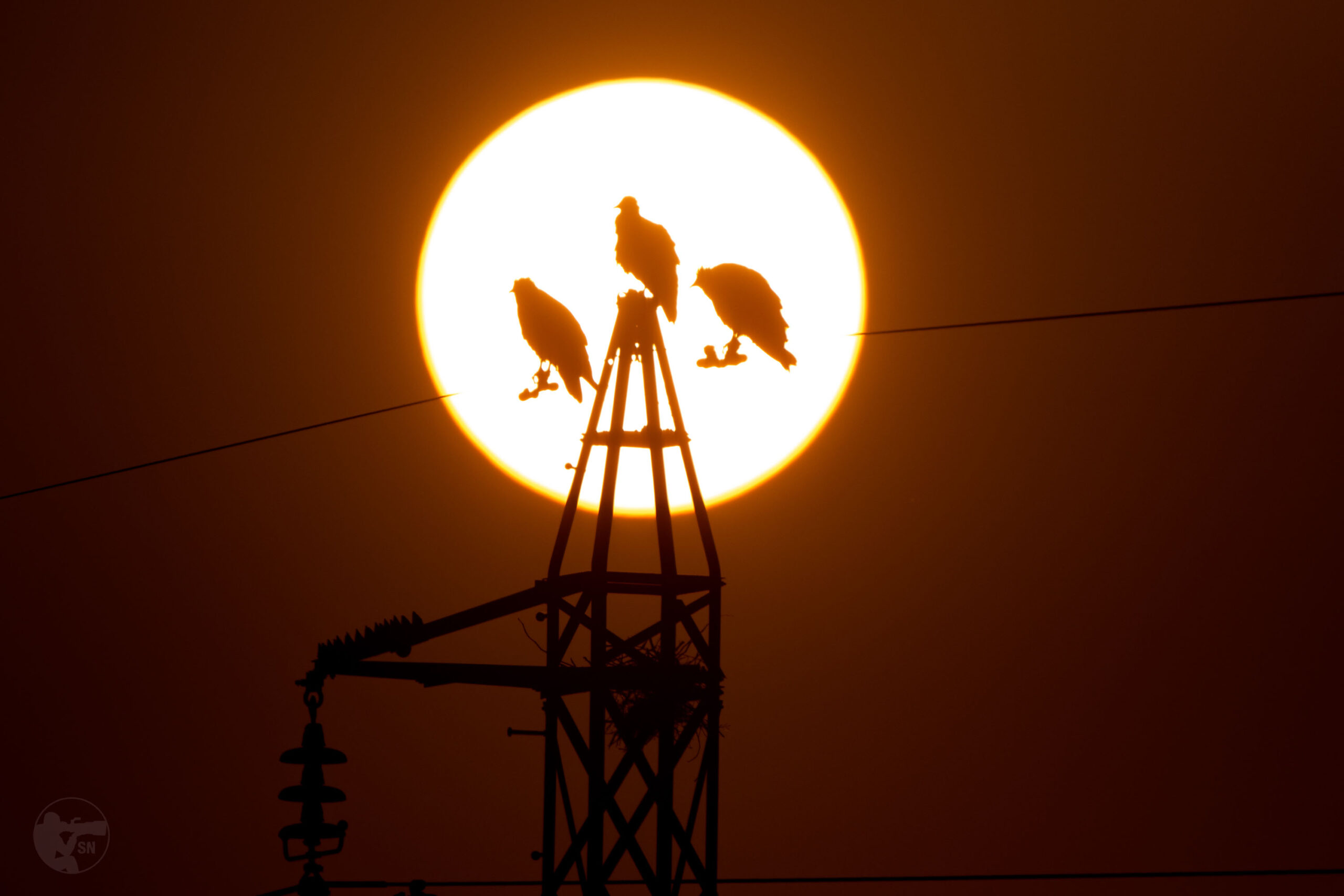The Thar Desert has long been the subject of my fascination. While I have had the good fortune of visiting these desert on numerous occasions, never had I been able to explore the myriad wildlife that inhabits the desert. Most people imagine deserts to be barren lifeless places, but that is often far from the truth. If one knows where to look, the desert is teeming with life. Above the ground, below it and, often in the sky.
Continuing our week long road trip to Western Rajasthan, we left the Demoiselle Cranes of Khichan behind and headed to Sam, a frontier outpost deep in the heart of the Thar. Sam is the gateway to the Desert National Park, the second largest in India. At over 3000 km², the park is home to hundreds of species across mammals, reptiles, birds and insects.
The park is perhaps best known for the Great Indian Bustard, one of the most critically endangered birds in the world, and the state bird of Rajasthan. We were lucky enough to get a glimpse of these majestic creatures and many more that call this place home.
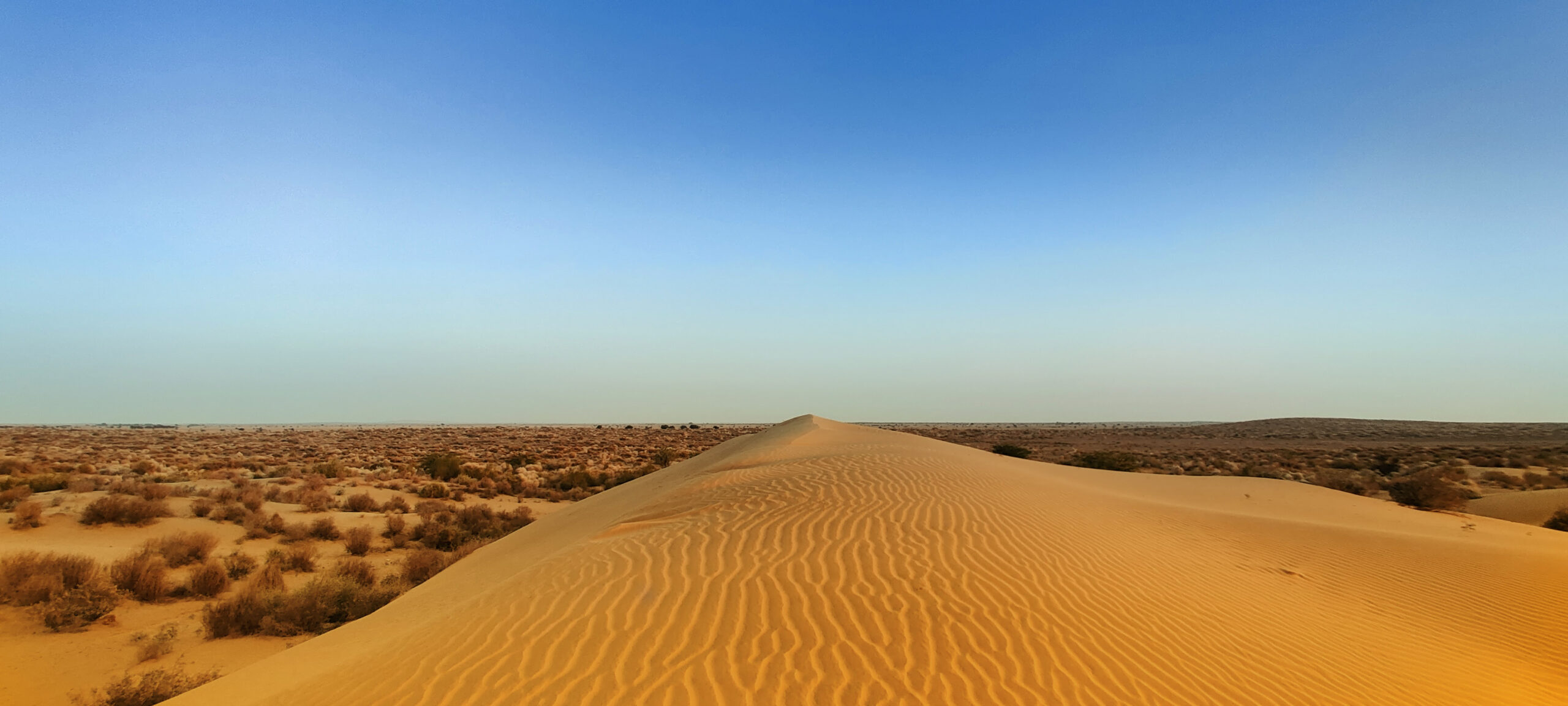
Azure blue skies and golden sands welcomed us. For someone confined by the pandemic to a concrete jungle, the vast emptiness was a sight to behold. A little further into the desert, we were greeted by a Long Legged Buzzard (Buteo rufinus). This medium sized bird of prey inhabits the vast open plains of the subcontinent, Central Asia and Northern Africa. Its diet mostly comprises rodents and small reptiles. While we were observing the buzzard, it promptly ejected what was left of its last meal, and flew off…
In winter, the Thar is home to many different birds of prey. While some are year long residents – many migrate from the steppes of Central Asia and the cold plains of Mongolia and Tibet, to escape the harsh winters. What draws them here is the seemingly endless supply of food. The desert is home to the Indian Spiny Tailed Lizard (Saara hardwickii) and the Indian Desert Jird (Meriones hurrianae). The two herbivores inhabit the desert brush by the thousands. During the day, the lizards come out to bask in the sun, while the jird scurries about to gather food. And this is all the chance that the raptors need.
One of the fiercest hunters of the Thar, is also one of its most beautiful. The Laggar Falcon (Falco jugger) is around 40-45 cm in length, with long wings that reach the tip of its tail. It has plain whitish underparts with a dark contrasting moustachial stripe below its eyes. Its feathers appear to be silver tipped, forming lovely patterns on the wing when folded.
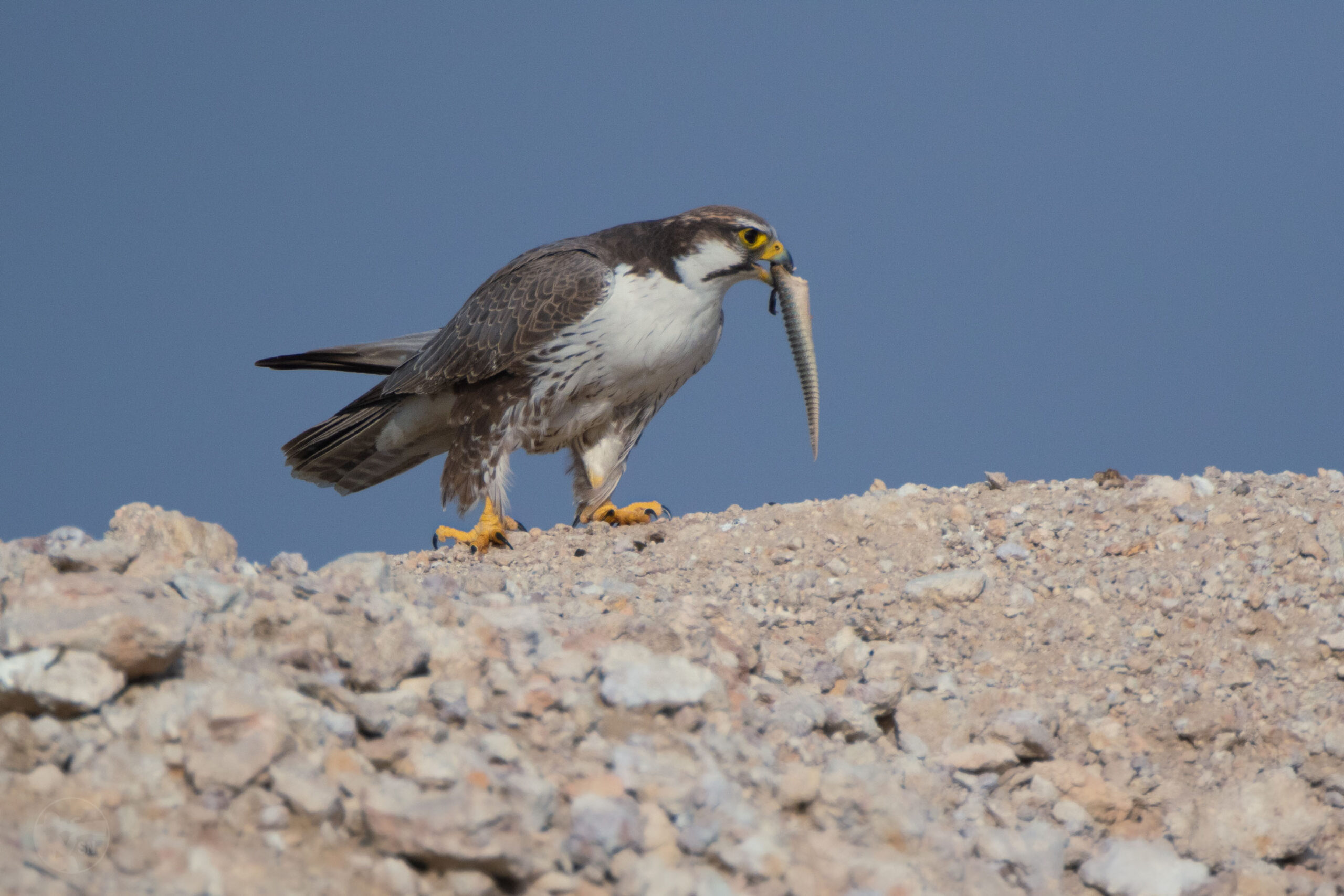
While looking around for other raptors, we spotted a magnificent Steppe Eagle (Aquila nipalensis). As it name suggests, it inhabits the steppes of Central Asia. It winters over a large part of the subcontinent, and is known to be a fearsome hunter. It has a wingspan that often exceeding 7 ft and can take down very large prey. So we were curious, when we spotted one crouching under a clump of kheemp.
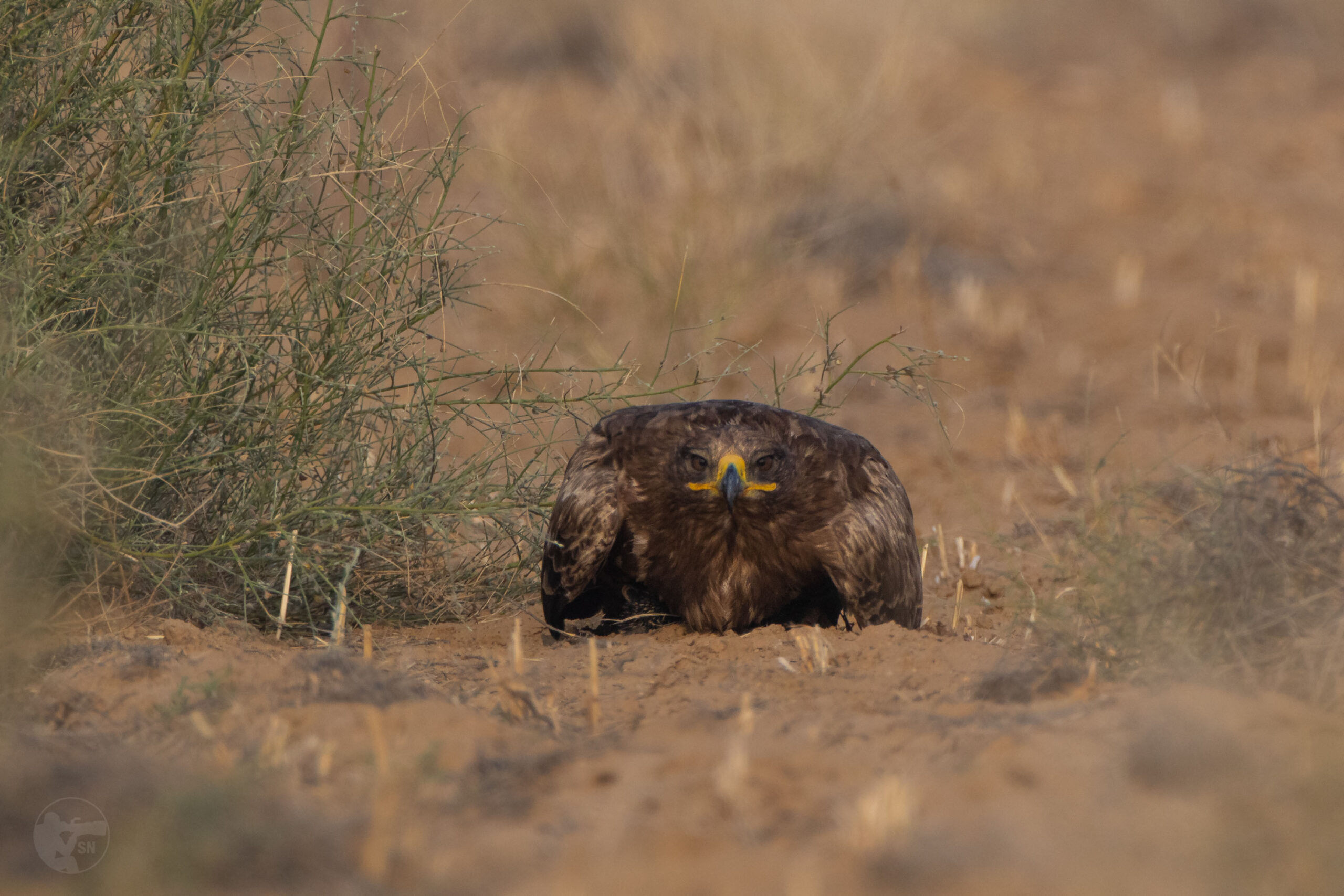
We could see something under its claws, but only when it got up was the mystery revealed. The eagle had caught an Indian Hedgehog (Paraechinus micropus)) of all things. It was a highly unusual kill for this species. Steppe eagles often wait by a burrow to catch an emerging rodent or mammal. In this case it turned out to be a hedgehog, and instinct would have driven it for the kill.
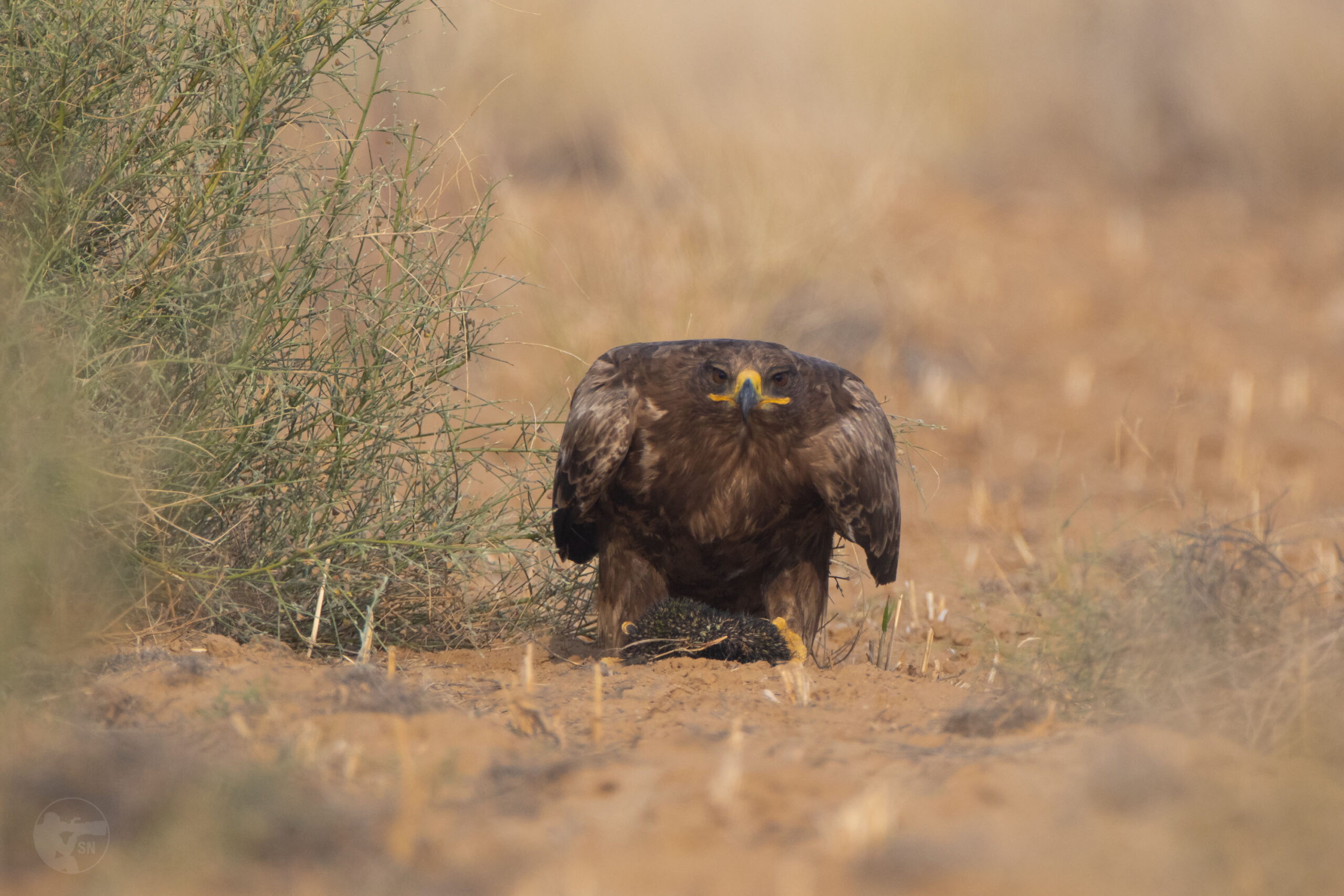
The hedgehog is not an easy prey. Its long spines make it incredibly difficult to catch, let alone kill. But our Steppe seemed pretty nonchalant about it. It did not want to share its meal with us. So it took off for another corner to enjoy its hard earned prize in peace.
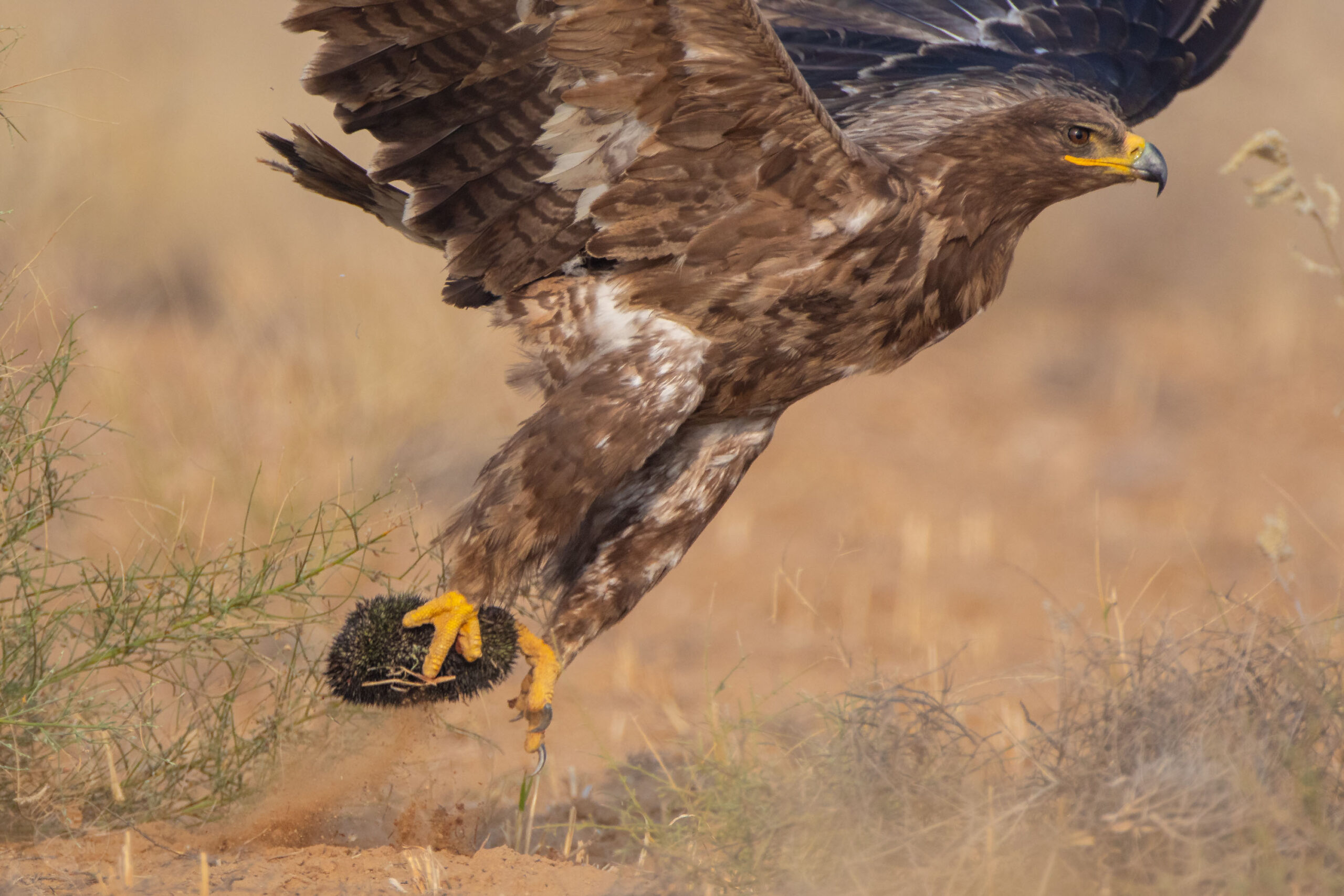
Over the next few days, we met many other residents of the desert. The Chinkara (Gazella bennettii) or the Indian Gazelle is a common sight, especially in the grasslands that fringe the desert. They however are notoriously shy, so photographing them is more luck than skill on occasions. And then there are smaller birds – sparrows, larks, sandgrouse, coursers, wheatears, shrikes, bee-eaters… the list goes on and on. The wiliest of them all is of course the Desert Fox, also known as the The White-footed fox (Vulpes vulpes pusilla). You can spot them all over the desert. But like the chinkara, they too are very shy of humans, and their cameras. And while on the dunes, one cannot miss the industrious Scarab Beetles, known more commonly as the dung beetles. The dunes are full of these critters and their tracks.
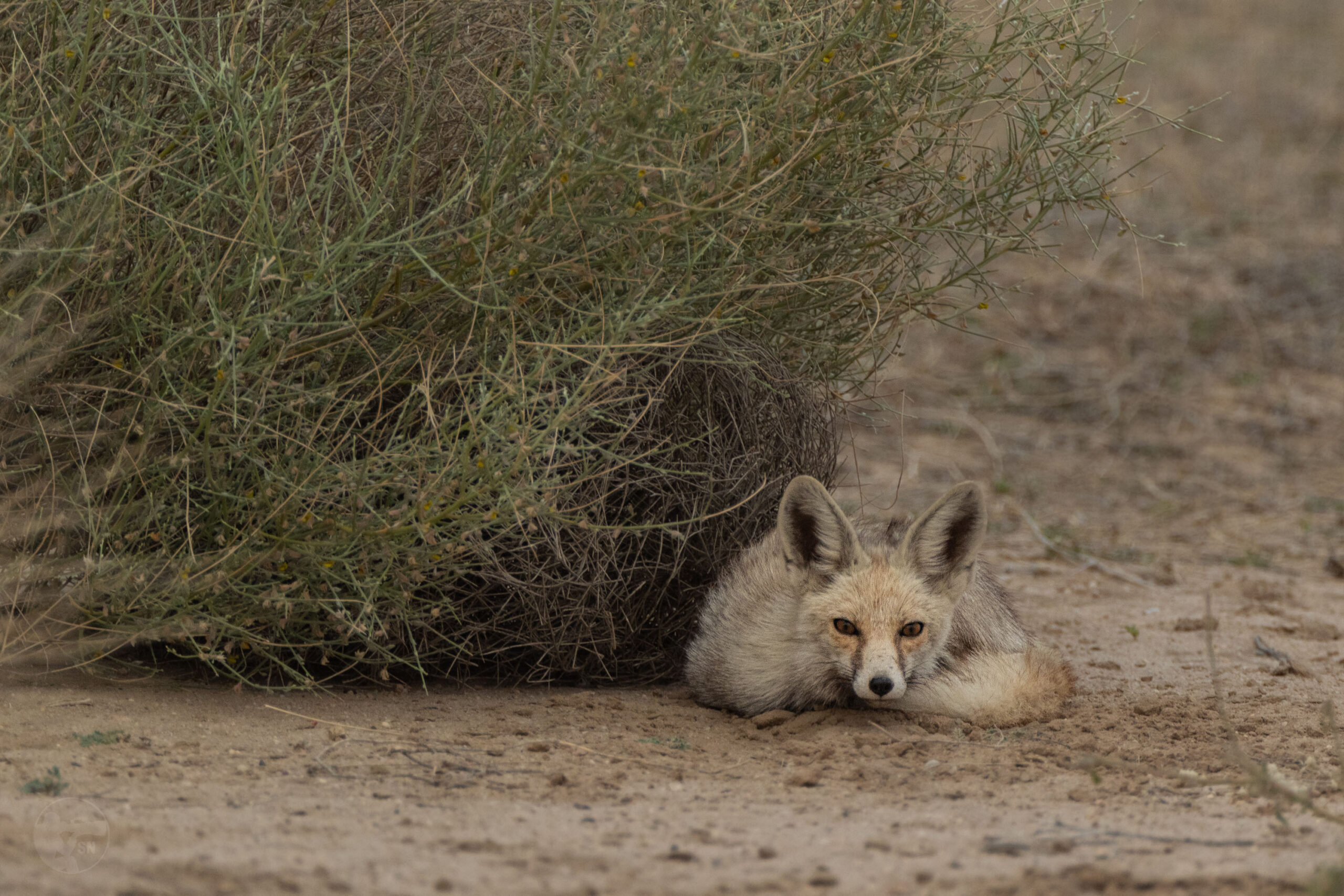
The crown jewel of the Thar is however the Great Indian Bustard (Ardeotis nigriceps). It is a large ground bird, that stands a metre tall or more and vaguely resembles an ostrich. The male of the species is larger, and has a pouch in the throat that is inflated during mating season to make deep, resonating calls. This behaviour is seen among ostrich as well. We however, had no luck photographing a male. We were able to track a mother with a sub-adult chick one evening.
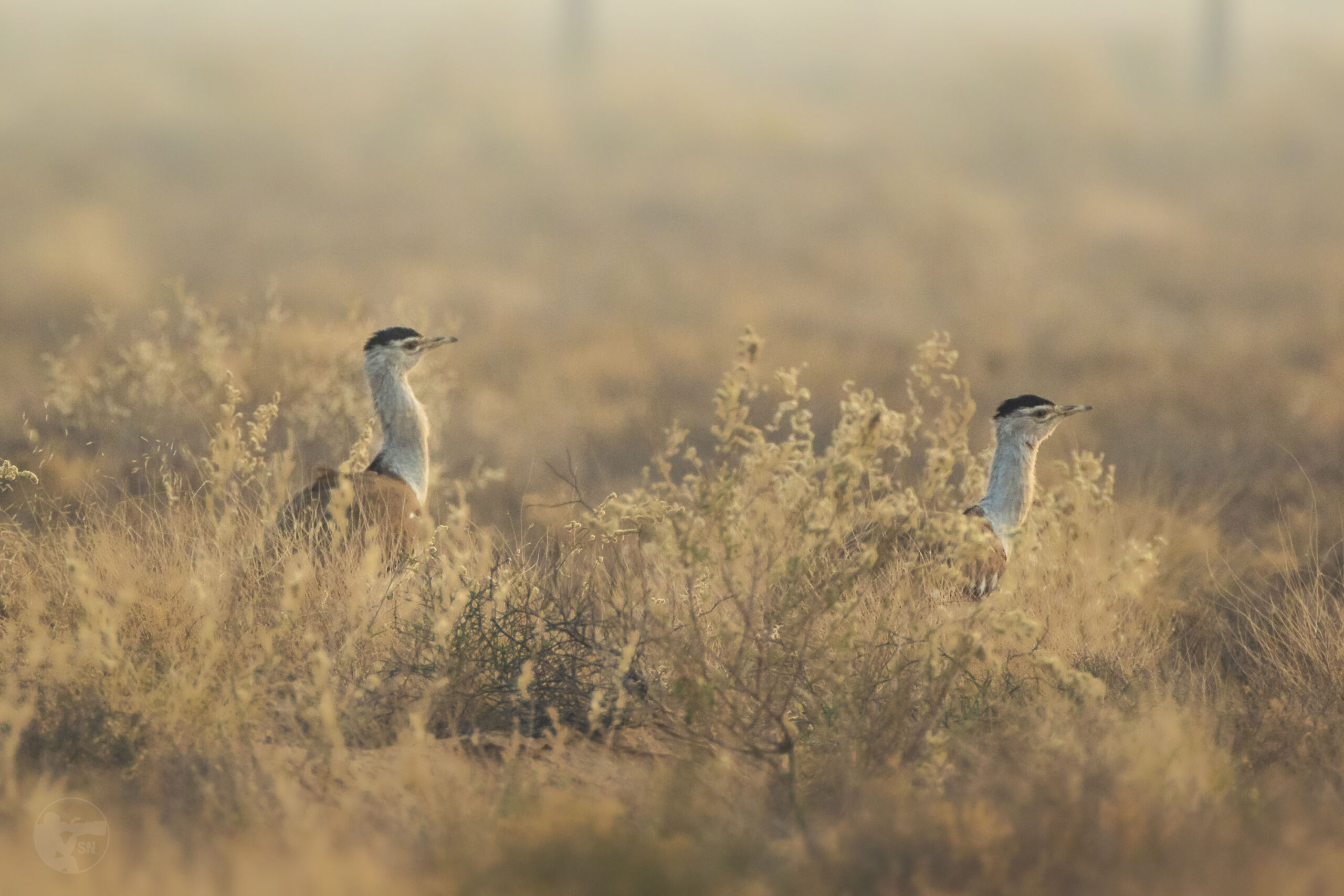
Once widespread across India, they have been reduced to scattered pockets across Rajasthan, Gujarat and Maharashtra. Hunting and habitat loss have decimated their population over the last few decades. As per recent estimates, between 150-200 individuals now survive in India along with a handful across the border in Pakistan. As a result, the IUCN Red List classifies them as Critically Endangered.
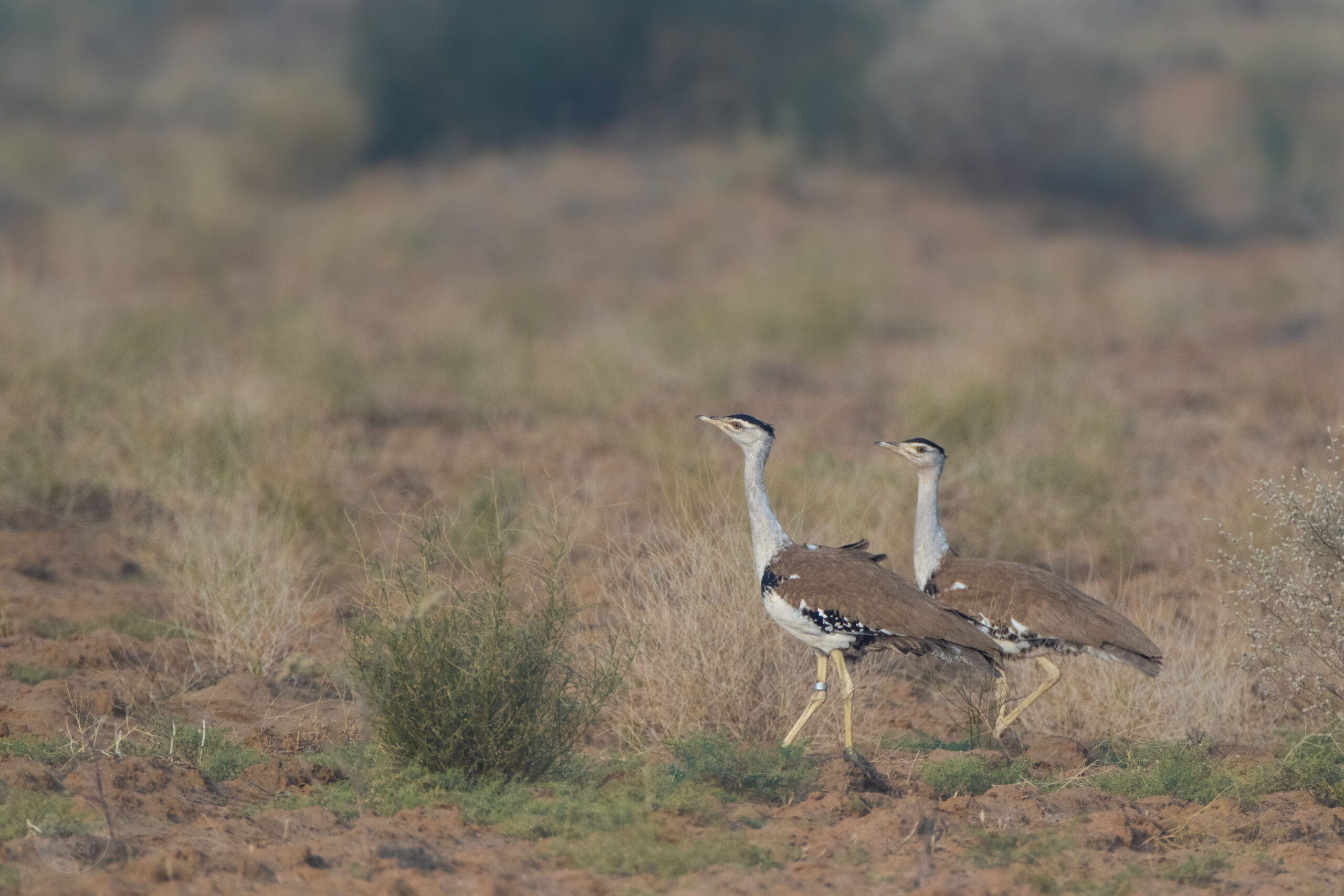
For the conservation of the bustards, vast swathes of the national park have been fenced off. This is being done in the hope of reducing conflict with humans, cattle and feral animals. Opinion is divided among conservationists on the efficacy of this strategy. A major threat that has emerged over the last few years is the presence of wind turbines and high voltage power lines in the desert. Rajasthan now has many wind and solar projects scattered across the border districts. There have been many instances of bustards crashing into the wind turbines, or the power lines built to evacuate power from these projects.
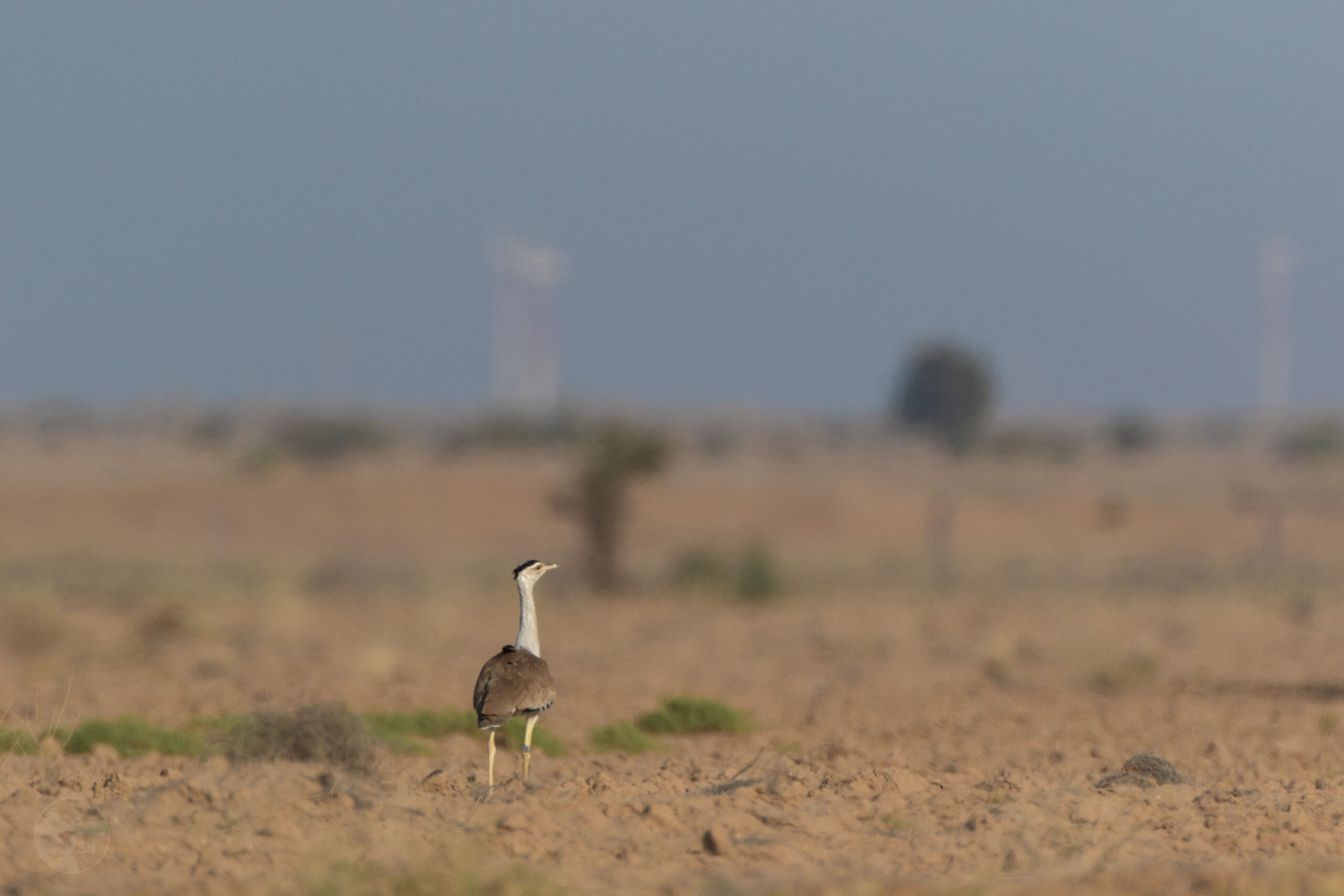
For bird photographers interested in vultures, the Desert National Park and its surrounding areas are a dream destination. Almost all species of vultures found in the Indian sub-continent have been recorded here. During our trip, we recorded vulture species like the White-rumped Vulture (Gyps bengalensis), Eurasian Griffon (Gyps fulvus), Himalayan Griffon (Gyps himalayensis), Cinereous Vulture (Aegypius monachus) and the Egyptian Vulture (Neophron percnopterus) among others.
Our favourites though were the gigantic Cinereous Vultures. While we had photographed all other species of vultures found in India, this one had eluded us. The Cinereous visits only the desert during its winter sojourn in the country. While most other vultures in the country belong to the order Gyps, this species is classified as Aegypius – meaning halfway between an eagle and a vulture. The monachus in its name comes from the bald head of European monks, where it is also known as the Monk Vulture. It is among the heaviest flying birds in the world, and some adults have been known to have wingspans touching 10 ft and weighing in excess of 11 kg.

There were other raptors too that we encountered during our stay. Tawny Eagles in both pale and dark morphs (Aquila rapax), Imperial Eagles (Aquila heliaca) were seen extensively, along with smaller residents like the Common (Falco tinnunculus) and Lesser Kestrels (Falco naumanni).
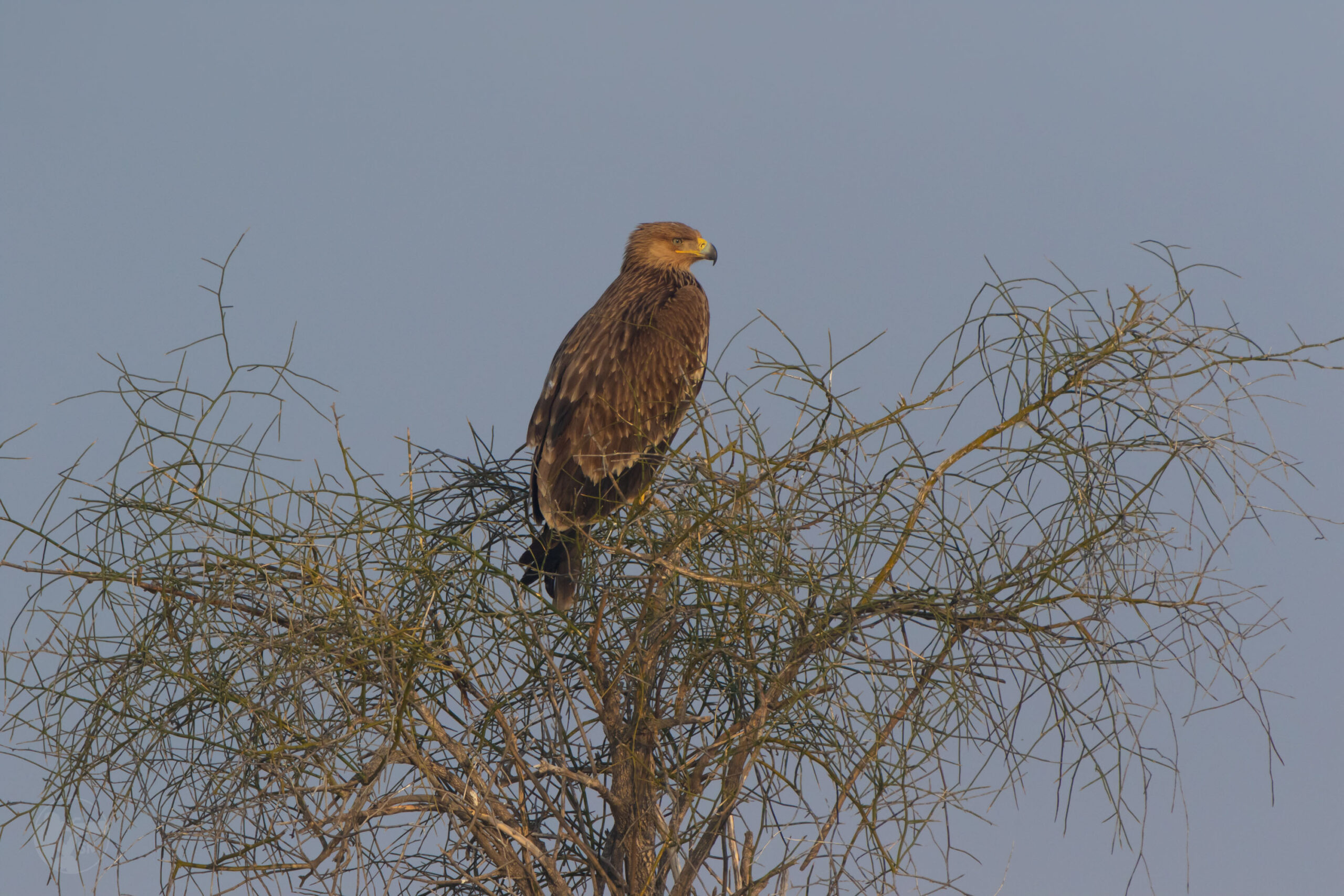

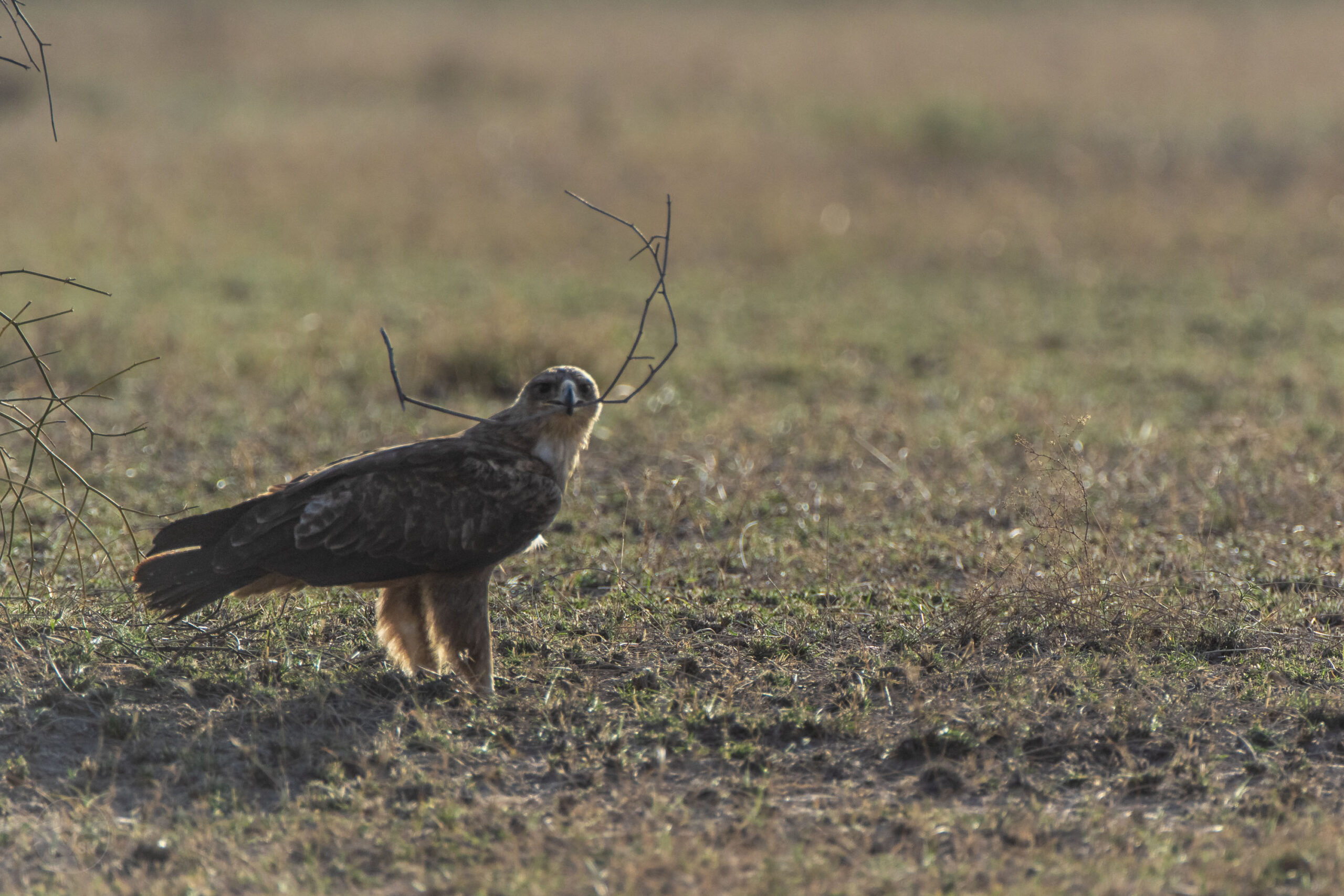
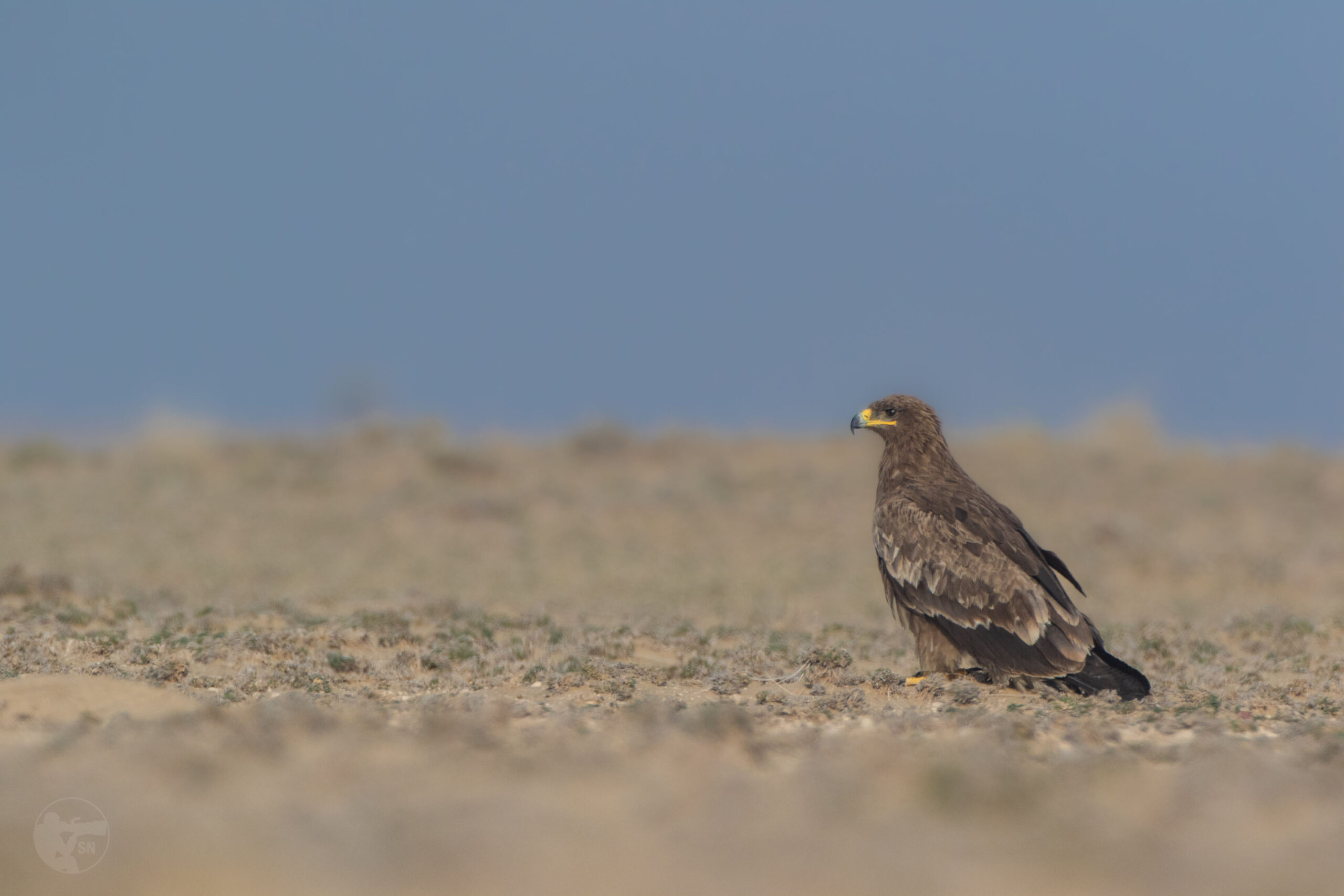

There were however two things that were missing from our wish list – a photograph of a Short-toed Snake Eagle (Circaetus gallicus), and that of a(ny) wild animal on the sand dunes, in the golden light around sunset. Every evening, we would scour the dunes for an opportunity to no avail. But then lady luck smiled on our last evening in the desert. Just as we were packing our gear, raptor was spotted on the far side of the dunes. We scampered as quickly and as silently as we could. And in its dying moments, the golden sun shone brightly on a Short-toed Snake Eagle perched majestically on top of the dunes……
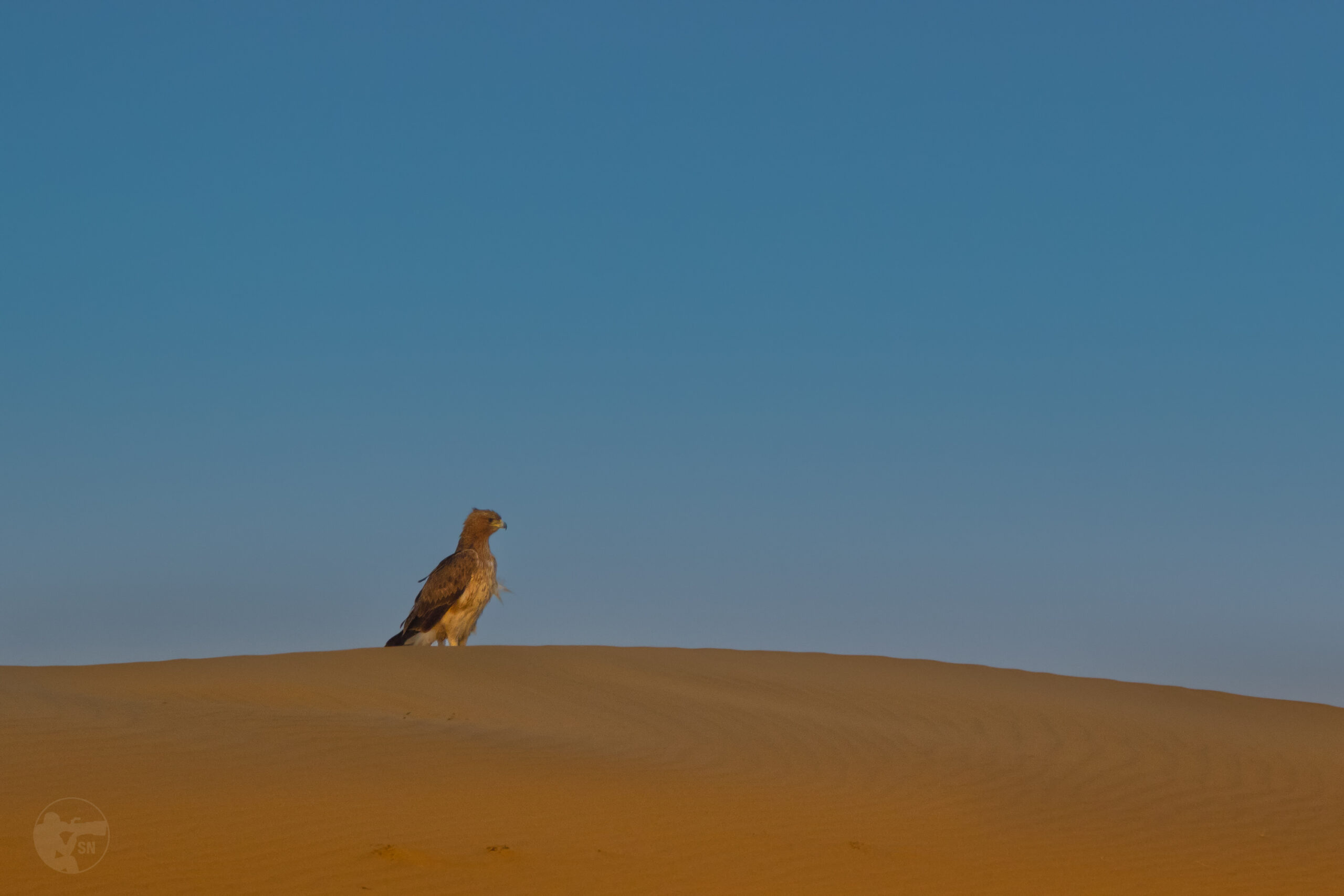
A big word of thanks to my partner Amisha Gupta, for pushing me out of procrastination and driving down the 800 km to Sam. And also for lending some of her photographs for this post. Do drop me a note in the comments section, in case you want to plan a trip to the Desert National Park.

